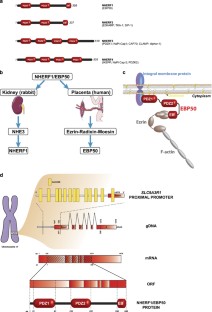

Kinase protein scaffold full#
The modification of Tyrosine 74 (88) (P in red) by non-receptor tyrosine kinases (nRTKs) weakens the affinity of p27 for CDK4 which is then free to allocate the ATP in its specific ATP-binding site, allowing the full activation of the kinase complex. ( A) p27 binds sequentially Cyclin D and CDK4, facilitating the formation of the kinase complex. The sequence of the events is reported in detail in the text. The scheme summarizes some of p27 interaction with different Cyclin/CDK heterodimers. In this review, we look at p27 Kip1 properties and ascribe part of its heterogeneous functions to the ability to act as an anchor or scaffold capable to participate in the construction of different platforms for modulating cell response to extracellular signals and allowing adaptation to environmental changes.ĬDK Rho GTPase cyclin cytoskeleton intrinsically unstructured protein p27Kip1 scaffold protein αTAT1. p27 Kip1 belongs to the family of the intrinsically unstructured proteins and thus it is endowed with a large flexibility and numerous interactors, only partially identified. As a matter of fact, the protein is phosphorylated, ubiquitinated, SUMOylated, O-linked N-acetylglicosylated and acetylated on different residues. Several factors modulate p27 Kip1 activities, including its level, cellular localization and post-translational modifications. Recently, other important p27 Kip1 functions have been described, including the regulation of cell motility and migration, the control of cell differentiation program and the activation of apoptosis/autophagy. It also regulates G2/M progression and cytokinesis completion, via CDK-dependent or -independent mechanisms. This discussion will further help in the development of novel benzimidazole compounds.The Cyclin-dependent kinase (CDK) regulator p27 Kip1 is a gatekeeper of G1/S transition. The reviews in the literature till now are focused only on the biological activities of benzimidazole viz., antiviral, anticancer and antifungal, but the present review focuses on the latest work, describing the inhibitor aspects and the potential of the benzimidazole ring. Various derivatives of benzimidazole, with different inhibitory activities, have been described on the basis of substitution around the central moiety, with an aim to help medicinal chemists to develop structure–activity relationships. This review discusses the development of distinct benzimidazoles with an array of enzyme inhibitors viz., aurora kinase inhibitors, cyclin-dependent kinase inhibitors, mitogen activated protein kinase inhibitors, polo like kinase inhibitors, Tie kinase inhibitors, lymphocyte specific kinase inhibitors etc., also highlighting the molecular interaction with enzyme inhibitors. Benzimidazole acts as an enzyme inhibitor that may interact with different proteins and enzymes and has inspired chemists to carry out various structural variations of it. These reduce the undesirable side effects and allow more non-specific interactions with non-target molecules. Enzyme inhibitors are used as a therapeutic agent with organic molecules, that interact with their targets through the weak linkages of hydrogen bonding and van der Waals interactions. Great advances in elucidating molecular structures allow the precise determination of the interactions between a protein and a therapeutic agent.


 0 kommentar(er)
0 kommentar(er)
